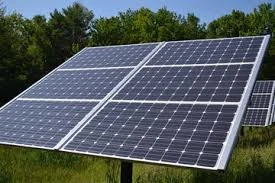polycrystalline solar panel size
Understanding Polycrystalline Solar Panel Sizes A Comprehensive Overview
In recent years, the demand for renewable energy sources has surged, with solar energy leading the charge. Among the various types of solar panels available, polycrystalline solar panels have gained immense popularity due to their cost-effectiveness and efficiency. However, a critical consideration when choosing polycrystalline solar panels is their size. This article aims to explore the dimensions of polycrystalline solar panels, their benefits, and how to select the appropriate size for your needs.
What Are Polycrystalline Solar Panels?
Polycrystalline solar panels are made up of multiple silicon crystals, which gives them a distinctive blue hue and a speckled appearance. Unlike monocrystalline panels, which are made from a single crystal structure, polycrystalline panels are created by melting multiple silicon crystals together. This manufacturing process is less expensive and requires less energy, which makes polycrystalline panels a budget-friendly option.
Typical Sizes of Polycrystalline Solar Panels
Polycrystalline solar panels come in various sizes to cater to different energy needs and installation spaces. The most common size for residential polycrystalline panels is 1.65m x 1m (approximately 65 inches by 39 inches), with a wattage output ranging between 250 to 350 watts per panel. These panels typically weigh between 15 to 25 kg (approximately 33 to 55 pounds), which makes handling and installation feasible for most homeowners.
For larger installations, such as commercial or industrial applications, polycrystalline panels can be found in larger dimensions and with higher wattage outputs. Some commercial panels might measure around 2m x 1m (approximately 79 inches by 39 inches) with outputs reaching up to 400 watts or more. The increased output and size can significantly boost energy production, making them ideal for larger-scale energy needs.
Benefits of Polycrystalline Solar Panel Sizes
1. Efficiency Ratio The physical size of the panel is crucial to its overall efficiency. While polycrystalline panels are slightly less efficient than their monocrystalline counterparts, advancements in technology have improved their performance over the years. Selecting the right size according to your energy needs can ensure optimal performance.
2. Space Considerations The size of the solar panel directly affects how many panels can fit into your available installation space. Smaller panels are better suited for limited roofs or small properties, while larger panels can be utilized in expansive fields or larger rooftops, maximizing energy production.
polycrystalline solar panel size

3. Cost Savings The size of the polycrystalline panels also influences the cost. Larger panels may have a higher initial investment but can provide greater energy output, yielding more significant long-term savings on electricity bills.
How to Choose the Right Size
Choosing the right size of polycrystalline solar panels for your installation involves several considerations
1. Energy Needs Assess your household or business's energy consumption. Calculate your average monthly electricity usage to determine how much energy you will need to produce using solar panels.
2. Available Space Measure the area where you plan to install the panels. If space is limited, consider smaller panels or optimizing your layout for maximum exposure to sunlight.
3. Local Climate The amount of sunlight your location receives will also impact the number of panels you need. Sunlight availability can vary greatly depending on geographic location and seasonal changes.
4. Budget Determine your budget for the solar installation. While larger panels might offer better returns on investment, they also come with a higher upfront cost.
Conclusion
Polycrystalline solar panels are an efficient and cost-effective option for harnessing solar energy. The size of these panels plays a critical role in energy production and financial savings. By considering your energy needs, available installation space, and local climatic conditions, you can choose the right size of polycrystalline solar panels that align with your renewable energy goals. As solar technology continues to evolve, these panels will undoubtedly remain a substantial part of our shift toward sustainable energy solutions. Embracing solar energy today can lead to a cleaner and greener tomorrow.
-
String Solar Inverter: The High-Efficiency Solution for Smart Solar EnergyNewsJul.14,2025
-
Revolutionizing Rooftop Energy with the Power of the Micro Solar InverterNewsJul.14,2025
-
Power Independence with Smart Off Grid Solar Inverter SolutionsNewsJul.14,2025
-
On Grid Solar Inverter: Powering the Future with Smart Grid IntegrationNewsJul.14,2025
-
Monocrystalline Solar Panels: High-Efficiency Power for the Future of Clean EnergyNewsJul.14,2025
-
Bifacial Solar Panel: A Smarter Investment for Next-Generation Energy SystemsNewsJul.14,2025







